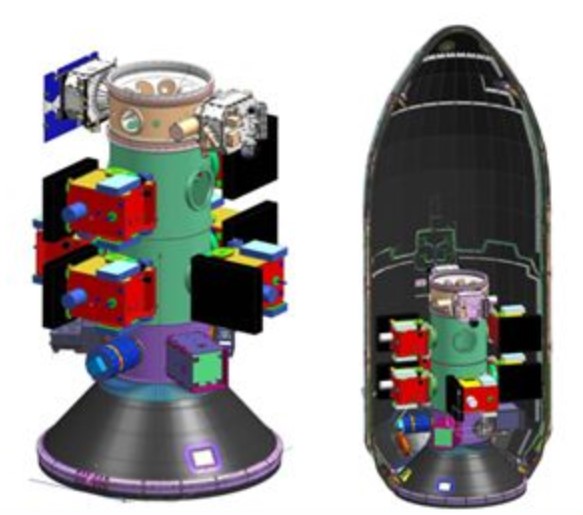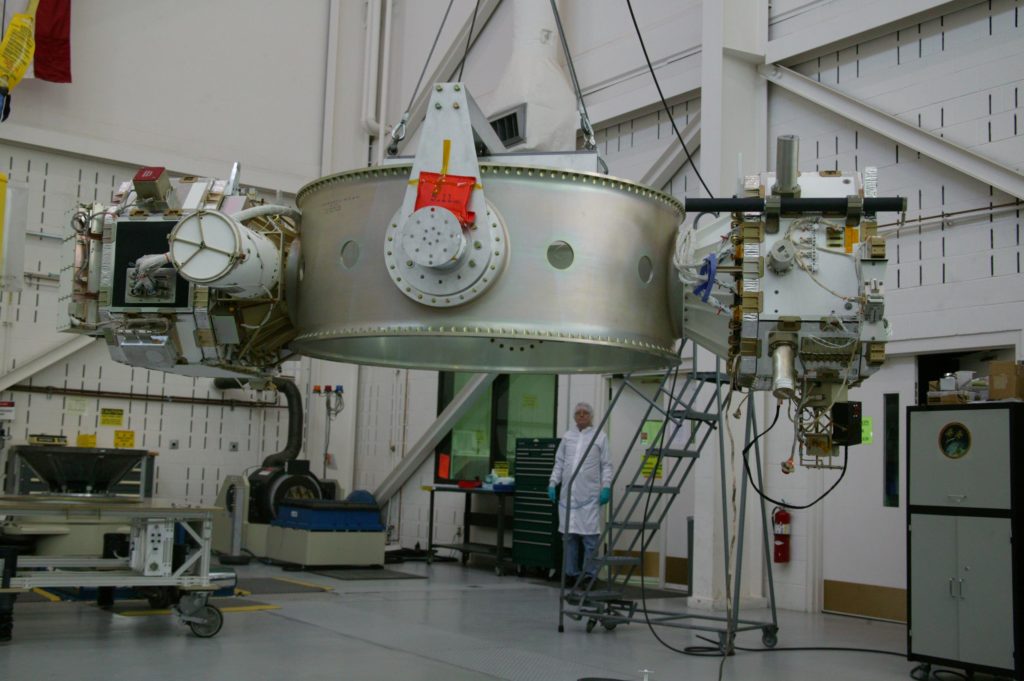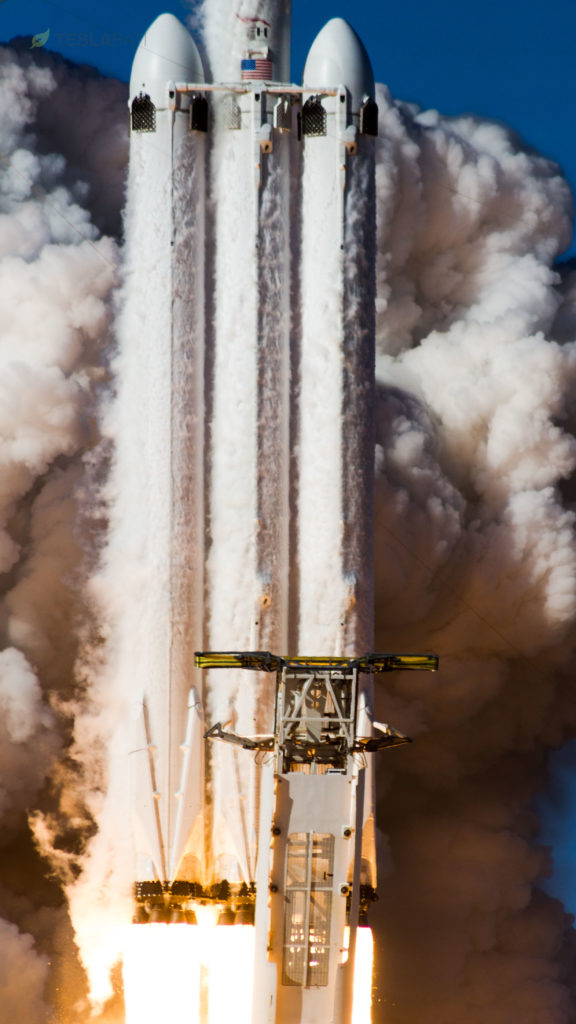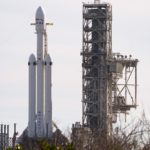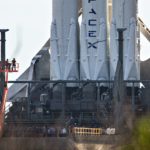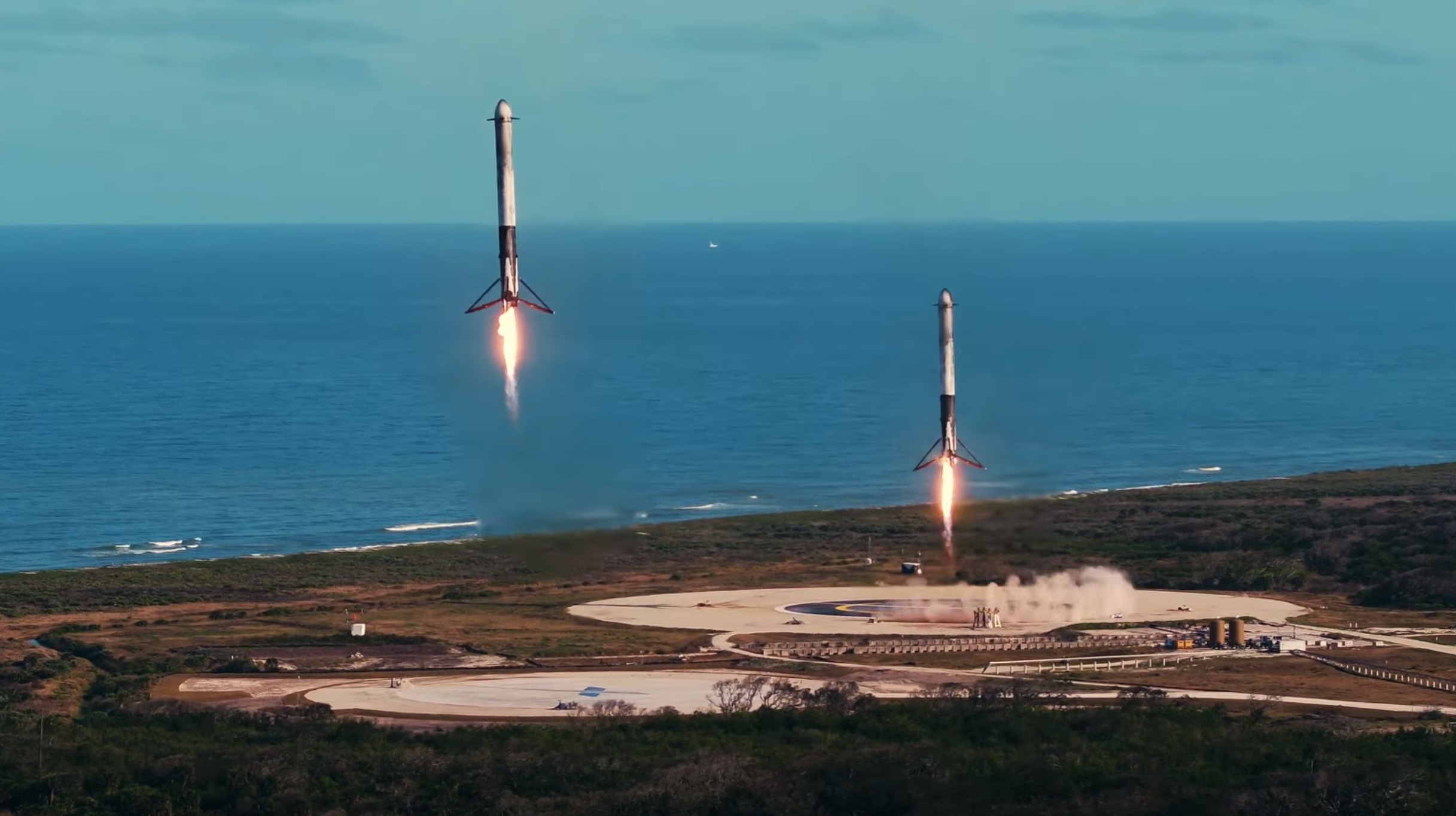

News
SpaceX Falcon Heavy with Block 5 rockets targets November launch debut
According to several of its satellite passengers, SpaceX’s second launch of Falcon Heavy – this time with three Falcon 9 Block 5 boosters – is understood to be targeted for no earlier than November 2018 and will mark the first commercial mission for the world’s most powerful operational rocket.
Under the blanket label Space Test Program-2 (STP-2), Falcon Heavy’s first operational mission will be conducted for the US Air Force and see 25 various spacecraft – some weighing as much as 500 kilograms – launched into an equally varied selection of orbits, requiring a complex series of restarts and burns for the rocket’s upgraded Block 5 second stage. STP-2 also includes a huge 5000-kilogram ballast mass as a result of the decision to fly the mission as a demonstration of Falcon Heavy instead of a less powerful but cheaper and simpler single-booster Falcon 9. The total mass of all 25 payloads is likely far beneath the powerful rocket’s actual capabilities, as are the performance and propellant reserves required for the upper stage to inject different spacecraft into a number of orbits, hence the inclusion of so much dead mass.

Falcon 9 Block 5 shows off its interstage heat shielding and titanium grid fins. Falcon Heavy’s three boosters will likely look nearly identical. (Tom Cross)
Of those 25 distinct payloads, a number even include their own co-passenger satellites and experiments and have orbit requirements ranging from a basic circular low Earth orbit (~700km) to an odd, elliptical orbit with ends at 6000 and 12000km. For Falcon Heavy’s second flight, SpaceX will be fielding three highly reusable Block 5 boosters and a Block 5 upper stage with upgrades that enable the vehicle to operate far longer on orbit and reignite its Merlin Vacuum engine three or more times.
- SpaceX’s second Falcon Heavy launch will either be the USAF’s STP-2, a collection of smaller satellites, or Arabsat 6A, a large communications satellite. (USAF)
- One group of STP-2 passengers, known as DSX, has been awaiting launch for more than eight years. (USAF)
- Falcon Heavy explodes off of Pad 39A in a spectacle of fire, Roadster in tow. (Tom Cross)
Unlikely to seriously tax Falcon Heavy’s brute-force payload lifting capabilities even with five metric tons of ballast, STP-2 will still be a lengthy and complicated endeavor for SpaceX’s Falcon upper stage – perhaps the most complex the company has yet to attempt. However, above all else, the most difficult aspect of the USAF STP-2 mission is almost certainly the comparatively mundane act of coordinating dozens of wildly different satellites and spacecraft from an equally varied number of different and geographically disparate institutions, companies, and government agencies, all of which must be ready for launch and attached to the same SpaceX payload adapter at roughly the same time to prevent mothballing launch delays.
RELATED: Reliving SpaceX Falcon Heavy: A press photographer’s memoir, not so much a blog post
- Falcon Heavy as seen a day before launch, February 5. (Tom Cross)
- All nine Merlin 1Ds displayed with their adorable cozies. (Tom Cross/Teslarati)
- Falcon Heavy’s stunning dual side booster recovery. (SpaceX)
SpaceX’s first Falcon Heavy completed its spectacularly successful debut earlier this year with a mission that saw CEO Elon Musk’s own Tesla Roadster launch into orbit around the sun and culminated in the truly extraordinary near-simultaneous landings of the rocket’s two flight-proven side boosters. Those boosters both completed their first launches in 2016, nearly two years prior to their second and final flights, and the reinforced center core was built as a new but now-outdated Block 3, lessening the blow from its failure to land aboard the drone ship Of Course I Still Love You after separating from the upper stage. Like all Block 5 versions of Falcon, the second Falcon Heavy’s Block 5 boosters should be expected to support a number of launches before retirement, ranging from several to as many as 100.
News
Tesla UK sales see 14% year-over-year rebound in June: SMMT data
The SMMT stated that Tesla sales grew 14% year-over-year to 7,719 units in June 2025.

Tesla’s sales in the United Kingdom rose in June, climbing 14% year-over-year to 7,719 units, as per data from the Society of Motor Manufacturers and Traders (SMMT). The spike in the company’s sales coincided with the first deliveries of the updated Model Y last month.
Model Y deliveries support Tesla’s UK recovery
Tesla’s June performance marked one of its strongest months in the UK so far this year, with new Model Y deliveries contributing significantly to the company’s momentum.
While the SMMT listed Tesla with 7,719 deliveries in June, independent data from New AutoMotive suggested that the electric vehicle maker registered 7,891 units during the month instead. However, year-to-date figures for Tesla remain 2% down compared to 2024, as per a report from Reuters.
While Tesla made a strong showing in June, rivals are also growing. Chinese automaker BYD saw UK sales rise nearly fourfold to 2,498 units, while Ford posted the highest EV growth among major automakers, with a more than fourfold increase in the first half of 2025.
Overall, the UK’s battery electric vehicle (BEV) demand surged 39% to to 47,354 units last month, helping push total new car sales in the UK to 191,316 units, up 6.7% from the same period in 2024.
EV adoption accelerates, but concerns linger
June marked the best month for UK car sales since 2019, though the SMMT cautioned that growth in the electric vehicle sector remains heavily dependent on discounting and support programs. Still, one in four new vehicle buyers in June chose a battery electric vehicle.
SMMT Chief Executive Mike Hawes noted that despite strong BEV demand, sales levels are still below regulatory targets. “Further growth in sales, and the sector will rely on increased and improved charging facilities to boost mainstream electric vehicle adoption,” Hawes stated.
Also taking effect this week was a new US-UK trade deal, which lowers tariffs on UK car exports to the United States from 27.5% to 10%. The agreement could benefit UK-based EV producers aiming to expand across the country.
News
Tesla Model 3 ranks as the safest new car in Europe for 2025, per Euro NCAP tests
Despite being on the market longer than many of its rivals, the Tesla Model 3 continues to set the bar for vehicle safety.

The Tesla Model 3 has been named the safest new car on sale in 2025, according to the latest results from the Euro NCAP. Among 20 newly tested vehicles, the Model 3 emerged at the top of the list, scoring an impressive 359 out of 400 possible points across all major safety categories.
Tesla Model 3’s safety systems
Despite being on the market longer than many of its rivals, the Tesla Model 3 continues to set the bar for vehicle safety. Under Euro NCAP’s stricter 2025 testing protocols, the electric sedan earned 90% for adult occupant protection, 93% for child occupant protection, 89% for pedestrian protection, and 87% for its Safety Assist systems.
The updated Model 3 received particular praise for its advanced driver assistance features, including Tesla’s autonomous emergency braking (AEB) system, which performed well across various test scenarios. Its Intelligent Speed Assistance and child presence detection system were cited as noteworthy features as well, as per a WhatCar report.
Other notable safety features include the Model 3’s pedestrian-friendly pop-up hood and robust crash protection for both front and side collisions. Euro NCAP also highlighted the Model 3’s ability to detect vulnerable road users during complex maneuvers, such as turning across oncoming traffic.
Euro NCAP’s Autopilot caution
While the Model 3’s safety scores were impressive across the board, Euro NCAP did raise concerns about driver expectations of Tesla’s Autopilot system. The organization warned that some owners may overestimate the system’s capabilities, potentially leading to misuse or inattention behind the wheel. Even so, the Model 3 remained the highest-scoring vehicle tested under Euro NCAP’s updated criteria this year.
The Euro NCAP’s concerns are also quite interesting because Tesla’s Full Self-Driving (FSD) Supervised, which is arguably the company’s most robust safety suite, is not allowed for public rollout in Europe yet. FSD Supervised would allow the Model 3 to navigate inner city streets with only minimal human supervision.
Other top scorers included the Volkswagen ID.7, Polestar 3, and Geely EX5, but none matched the Model 3’s total score or consistency across categories. A total of 14 out of 20 newly tested cars earned five stars, while several models, including the Kia EV3, MG ZS, and Renault 5, fell short of the top rating.
Elon Musk
Why Tesla’s Q3 could be one of its biggest quarters in history
Tesla could stand to benefit from the removal of the $7,500 EV tax credit at the end of Q3.

Tesla has gotten off to a slow start in 2025, as the first half of the year has not been one to remember from a delivery perspective.
However, Q3 could end up being one of the best the company has had in history, with the United States potentially being a major contributor to what might reverse a slow start to the year.
Earlier today, the United States’ House of Representatives officially passed President Trump’s “Big Beautiful Bill,” after it made its way through the Senate earlier this week. The bill will head to President Trump, as he looks to sign it before his July 4 deadline.
The Bill will effectively bring closure to the $7,500 EV tax credit, which will end on September 30, 2025. This means, over the next three months in the United States, those who are looking to buy an EV will have their last chance to take advantage of the credit. EVs will then be, for most people, $7,500 more expensive, in essence.
The tax credit is available to any single filer who makes under $150,000 per year, $225,000 a year to a head of household, and $300,000 to couples filing jointly.
Ending the tax credit was expected with the Trump administration, as his policies have leaned significantly toward reliance on fossil fuels, ending what he calls an “EV mandate.” He has used this phrase several times in disagreements with Tesla CEO Elon Musk.
Nevertheless, those who have been on the fence about buying a Tesla, or any EV, for that matter, will have some decisions to make in the next three months. While all companies will stand to benefit from this time crunch, Tesla could be the true winner because of its sheer volume.
If things are done correctly, meaning if Tesla can also offer incentives like 0% APR, special pricing on leasing or financing, or other advantages (like free Red, White, and Blue for a short period of time in celebration of Independence Day), it could see some real volume in sales this quarter.
You can now buy a Tesla in Red, White, and Blue for free until July 14 https://t.co/iAwhaRFOH0
— TESLARATI (@Teslarati) July 3, 2025
Tesla is just a shade under 721,000 deliveries for the year, so it’s on pace for roughly 1.4 million for 2025. This would be a decrease from the 1.8 million cars it delivered in each of the last two years. Traditionally, the second half of the year has produced Tesla’s strongest quarters. Its top three quarters in terms of deliveries are Q4 2024 with 495,570 vehicles, Q4 2023 with 484,507 vehicles, and Q3 2024 with 462,890 vehicles.
-

 Elon Musk4 days ago
Elon Musk4 days agoTesla investors will be shocked by Jim Cramer’s latest assessment
-

 News1 week ago
News1 week agoTesla Robotaxi’s biggest challenge seems to be this one thing
-

 Elon Musk2 weeks ago
Elon Musk2 weeks agoFirst Look at Tesla’s Robotaxi App: features, design, and more
-

 News2 weeks ago
News2 weeks agoSpaceX and Elon Musk share insights on Starship Ship 36’s RUD
-

 News2 weeks ago
News2 weeks agoWatch Tesla’s first driverless public Robotaxi rides in Texas
-

 News1 week ago
News1 week agoWatch the first true Tesla Robotaxi intervention by safety monitor
-

 News2 weeks ago
News2 weeks agoTesla has started rolling out initial round of Robotaxi invites
-

 Elon Musk2 weeks ago
Elon Musk2 weeks agoTesla to launch in India in July with vehicles already arriving: report

